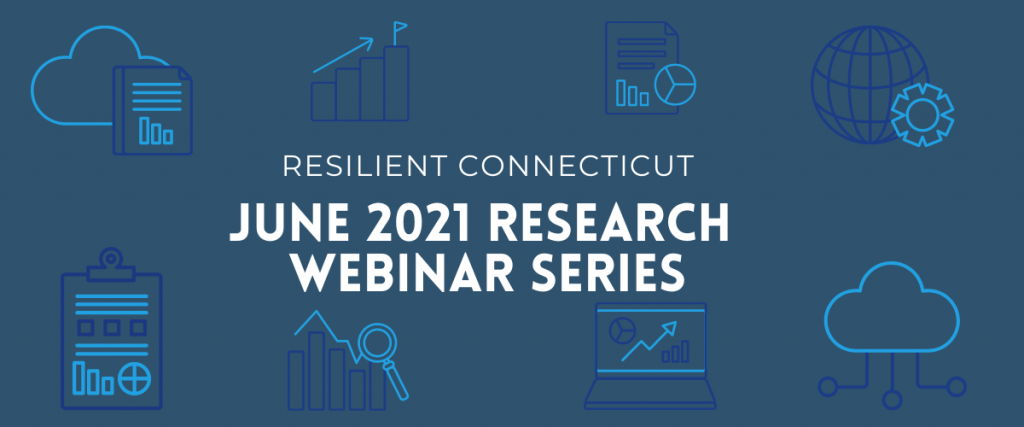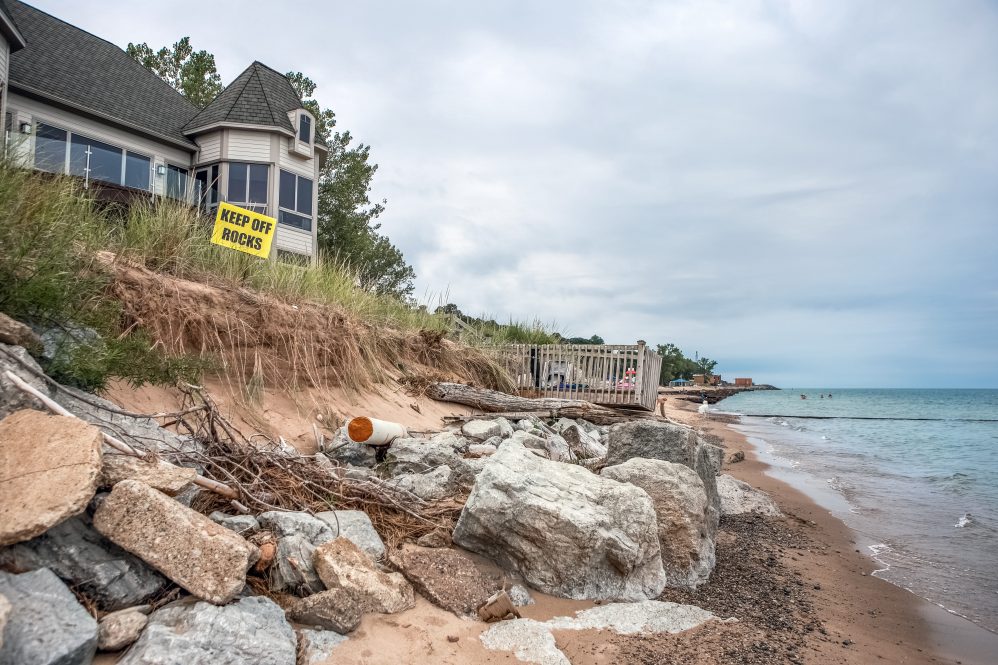As global temperatures rise, so does the sea level. Experts predict it could rise as much as 20 inches by 2050, putting coastal communities, including those in Connecticut, in jeopardy.
One possible solution is a retreat from the shoreline, in which coastal homes are removed to take them out of imminent danger. This solution comes with many complications, including reductions in tax revenue for towns and potentially diminished real estate values for surrounding properties. Additionally, it can be difficult to get people to volunteer to relocate their homes.

Researchers are tackling this problem by working to better understand the value of oceanfront properties and how those values could change because of climate change.
Charles Towe, associate professor of agriculture and resource economics in the College of Agriculture, Health, and Natural Resources, presented his findings on the implications of shoreline retreat on tax revenue and property values in a Connecticut Institute for Resilience & Climate Adaptation (CIRCA) webinar last week. Towe and his team investigated how tax instrument financing could potentially compensate for the cost of a retreat from the coast in Connecticut.
Towe’s team included Ph.D. candidate Zhenshan Chen, and professor of agricultural and resource economics Stephen Swallow, of the Center for Environmental Sciences and Engineering, and Nancy Bockstael from the University of Maryland’s College of Agriculture and Natural Resources.
Towe’s study focused on Connecticut homes specifically. Connecticut has heterogeneous topography compared to other areas, like Florida, in which this kind of study has been conducted. Connecticut’s coastline is also economically diverse, as five of the state’s 24 coastal towns are in the top 10% in terms of wealth, while nine are in the lower half.
The first part of Towe’s study looked at how shoreline amenities, such as distance to the water, affect housing prices. He translated that information into simulations of shoreline retreat outcomes using data from the past 20 years.
Towe analyzed characteristics of the homes, such as size and amenities, and neighborhoods, such as location and quality of schools, along with transaction data. Transaction data includes the timing, price, and financing of house sales on the coast.
Towe found that homes directly on the coast see a 40% increase in value, while those across the street from the coast see a 27% increase. However, homes located on floodplains next to a river see a 2.5% decrease.
“The amenities premium on the coast is huge,” Towe says.
The next part of the study created policy simulations. These simulations estimate possible avenues to recover revenue lost through retreat by looking at how it could impact neighborhoods.
For example, Towe conducted viewshed analyses using GIS mapping which measures the relationship between how obstructed a house’s view of the water is and its value. A house that has an obscured view of the ocean is valued less than a house with a clearer view. However, if houses in front of one of these obscured-view homes were taken down as part of a retreat measure, the value of the remaining house would increase.
One simulation, in which 1,200 lower-valued properties on the floodplain, showed the value increase of neighboring homes would allow municipalities to recoup approximately 14% of revenue lost through retreat.
These findings can help guide municipal, state, and even federal planning in the face of climate change as they search for solutions that provide the best outcome for citizens and communities.
The CIRCA “brown bag” Resilient Connecticut webinar series presents talks by experts studying various aspects of how climate change is impacted Connecticut.
Follow UConn CAHNR on social media.



